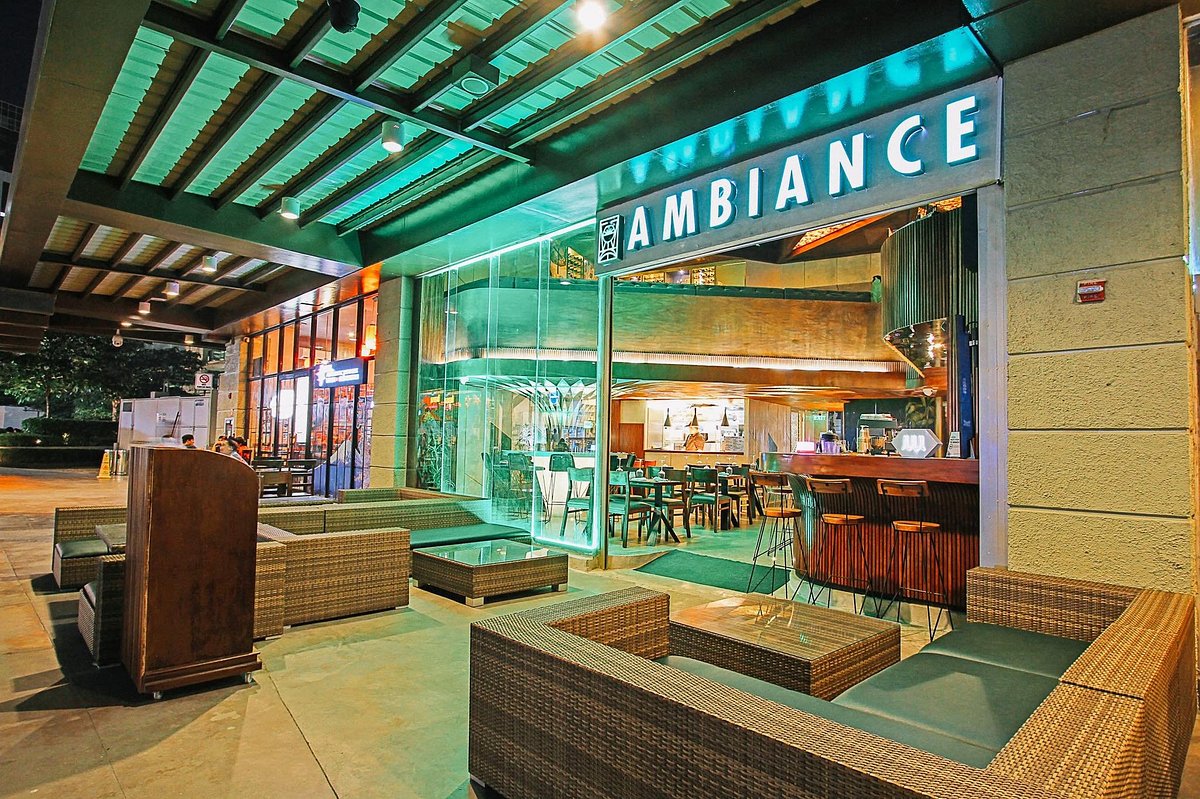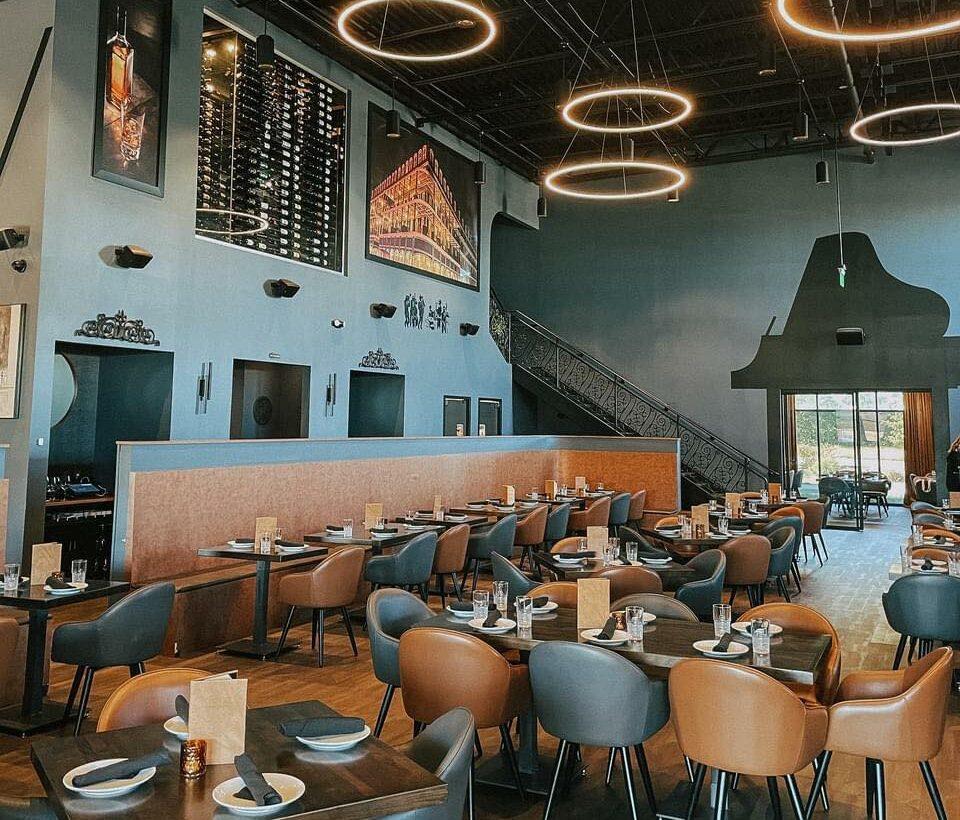Romantic Restaurants Islamabad: Ideal Dining Locations for Pairs
Wiki Article
Savor Authentic Asian Food With a Pan-Asian Twist for a Culinary Experience
Getting started on a cooking journey with genuine Asian food, enhanced with a Pan-Asian twist, offers a distinct chance to explore the rich tapestry of flavors that specify the area's varied culinary customs. As you ponder these attracting recipes, take into consideration the cultural stories and historical influences that form them, each bite providing a tale waiting to be found. pan asian dining Islamabad.
Discovering Pan-Asian Flavors
In the world of worldwide gastronomy, Pan-Asian food attracts attention for its exceptional variety and the harmonious interplay of flavors from various Eastern cultures. This cooking approach celebrates the rich practices and unique components found throughout the continent, developing a tapestry of preferences that is both enjoyable and interesting. Key to Pan-Asian cuisine is its capacity to balance different flavors-- sweet, salted, spicy, and sour-- while highlighting the quality and high quality of each component.From the umami-rich soy sauce of Japan to the intense chili peppers of Thailand, Pan-Asian food provides a comprehensive palette of flavors. These components are often combined in innovative ways, enhancing recipes with layers of intricacy. For example, making use of great smelling natural herbs such as lemongrass and cilantro, typical in Vietnamese and Thai cuisine, includes a revitalizing illumination to recipes, while the incorporation of coconut milk provides a creamy, rich structure.
The focus on fresh produce and fragrant flavors makes sure that each meal is not just a feast for the palate but also for the detects. Pan-Asian food invites diners to start a culinary trip, exploring the large and varied landscapes of Oriental gastronomy with every bite.
Blend Recipes to Attempt
While Pan-Asian food is commemorated for its traditional tastes, the contemporary culinary landscape is significantly welcoming fusion meals that blend these traditional elements with impacts from various other regions. This ingenious technique not just honors the abundant heritage of Oriental culinary arts but additionally introduces unique preference experiences that attract contemporary tastes.
An archetype of such a combination meal is the Korean-Mexican taco, where marinaded bulgogi beef is wrapped in a warm tortilla, topped with kimchi and a zesty gochujang-infused salsa. This combination weds the vibrant, mouthwatering tastes of Korea with the vibrant, fresh elements of Mexican cuisine. In a similar way, sushi burritos have actually gained appeal, joining together the fragile virtuosity of Japanese sushi with the hearty, hand-held ease of a burrito, usually including fusion components like tempura shrimp and avocado with a drizzle of wasabi mayo.
Another notable meal is Thai curry ramen, which infuses the velvety, fragrant spices of Thai curry into the reassuring brew of conventional Japanese ramen, producing a harmonious mix that entices the detects. These fusion recipes expand past plain uniqueness; they stand for a cooking discussion between cultures, motivating exploration and advancement on the planet of Pan-Asian cuisine.
Necessary Ingredients and Flavors
To genuinely value Pan-Asian cuisine, one have to understand the necessary active ingredients and flavors that form its foundation. This diverse cooking style attracts from a rich tapestry of Oriental customs, using an unified mix of flavors and appearances.Fragrant components are critical, with garlic, ginger, and lemongrass being common throughout different Pan-Asian dishes. These components supply a fragrant base that enhances the complexity of flavors. Spices such as star anise, cardamom, and cinnamon present heat and personality, resembling impacts from regions like China and India.

Cooking Techniques and Tips
Understanding the art of Pan-Asian cuisine calls for familiarity with its unique food preparation techniques, each adding to the dynamic tapestry of tastes this cooking practice is celebrated for. Central to these methods is the stir-fry, a quick cooking strategy that protects the dietary integrity and dazzling shades of components. Utilizing a frying pan, the stir-fry technique permits also warmth distribution, essential for achieving the particular texture and flavor balance of Pan-Asian recipes.Another fundamental strategy is steaming, especially widespread in Chinese cuisine. This gentle approach maintains the natural tastes and nutrients of ingredients, making it ideal for seafood and veggies. Dumplings, a beloved staple, frequently gain from steaming, resulting in soft, succulent appearances.
Cooking, also essential, passes on smoky midsts to recipes such as Korean bulgogi or Japanese yakitori (Chinese food Islamabad). This technique typically entails marinading components, permitting tastes to penetrate deeply before food preparation over an open flame or hot plate
Lastly, understanding the art of balancing flavors-- wonderful, sour, salted, bitter, and umami-- is essential. Effectively layering these aspects can boost a dish from regular to phenomenal, supplying a complicated and pleasing cooking experience that embodies the significance of Pan-Asian cuisine.
Eating Experiences Worldwide
Around the world, Pan-Asian cuisine supplies an unequaled eating experience, celebrated for its rich tapestry of tastes and vivid discussions. This culinary phenomenon has actually gone beyond cultural limits, capturing the hearts and tastes buds of food fanatics worldwide. In cosmopolitan cities fresh York, London, and Sydney, Pan-Asian restaurants serve as melting pots where culinary practices from Thailand, Japan, China, and past merge, providing diners with a diverse mix of dishes that highlight the region's diversity.The international appeal of Pan-Asian cuisine lies in its ability to use both credibility and development. Cooks skillfully wed traditional active ingredients such as lemongrass, soy sauce, and miso with modern techniques, causing recipes that are both familiar and refreshingly brand-new. This fusion allows restaurants to embark on a culinary journey that values heritage while welcoming modernity.
In addition, eating experiences are raised through thoughtfully made environments that mirror the ethos of Pan-Asian aesthetics. From minimalist Japanese-inspired interiors to lively Thai-themed rooms, each dining establishment supplies an one-of-a-kind setting that complements the cooking offerings. Because of this, clients are not simply consuming a dish however partaking in a cultural experience, making Pan-Asian dining a really global sensation.
Conclusion
The asian fusion restaurant expedition of Pan-Asian cuisine supplies a profound understanding of the elaborate interaction of flavors and cooking practices throughout Asia. By accepting fusion recipes such as Thai curry ramen and sushi burritos, the culinary journey not only highlights the flexibility of standard ingredients however additionally showcases innovative modern-day methods. This gastronomic journey, enhanced by cooking techniques and crucial flavors, gives a distinct opportunity to value the multiculturalism and cooking artistry that define Pan-Asian cuisine on an international scale.Getting started on a culinary journey through authentic Oriental food, enhanced with a Pan-Asian twist, supplies a special possibility to explore the rich tapestry of flavors that specify the area's diverse culinary customs.In the world of global gastronomy, Pan-Asian cuisine stands out for its remarkable diversity and the unified interaction of tastes from numerous Asian cultures. Key to Pan-Asian food is its capacity to stabilize contrasting flavors-- wonderful, salty, spicy, and sour-- while highlighting the freshness and top quality of each ingredient.

Report this wiki page